Idea by
Esta Matkovic
Social Forensic - Architecture (SF - Architecture)
Call for ideas 2020
Museum for indigenous houses
Museum for indigenous houses
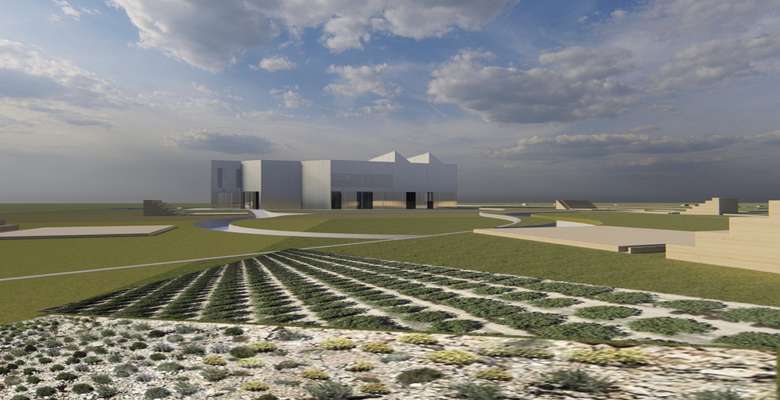
- Site-specific cases
The project is made for the competition: Museum for indigenous houses in Zagreb, end of 2019. As a program in urbanism, we propose a laboratory, production of knowledge so we could approach the time of creation, learn ways and reuse them in other contexts such as contemporary architecture, design, philosophy, urbanism, poetry, etc.
We have transformed the whole museum and its landscape into an observational and laboratory concept. Each step of involvement in this project should be planned, the work on inclusion.
In the concept of the Museum, we are going to deconstruct and then construct indigenous houses, support local economy, and as well involve students, professionals and make the whole process visible. We can return to materials that include professions and technologies that no longer exist, and that we consider important enough to pay homage, as a type of memory recognition and technology.
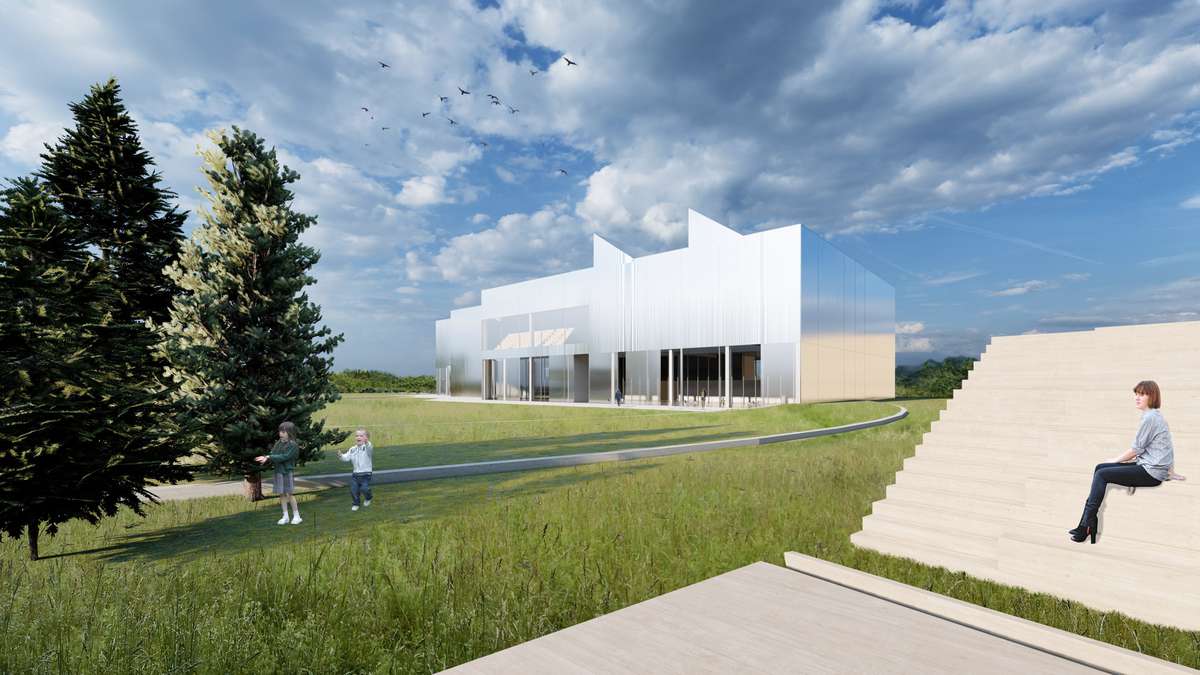
Exterior arrangements with tribune prototype. The Center for visitors consists of programs: central building with galleries, offices, educational spaces, and catering programs. The outdoor program is a prototype platform and stands for students and visitors.

Page with the ground floor and render of the main central building. Practical involvement: the conservators will also be in the teaching process, teaching architecture students, engineers (the school next to the future complex), designers, etc. ,, how to dismantle, deconstruct the house, and while re-constructing it make a review, map, tutorial, review, go through the details; method of dismantling the object. We want to suggest involvement. Those who need to know this knowledge.

Page with the first floor and render of the central building.
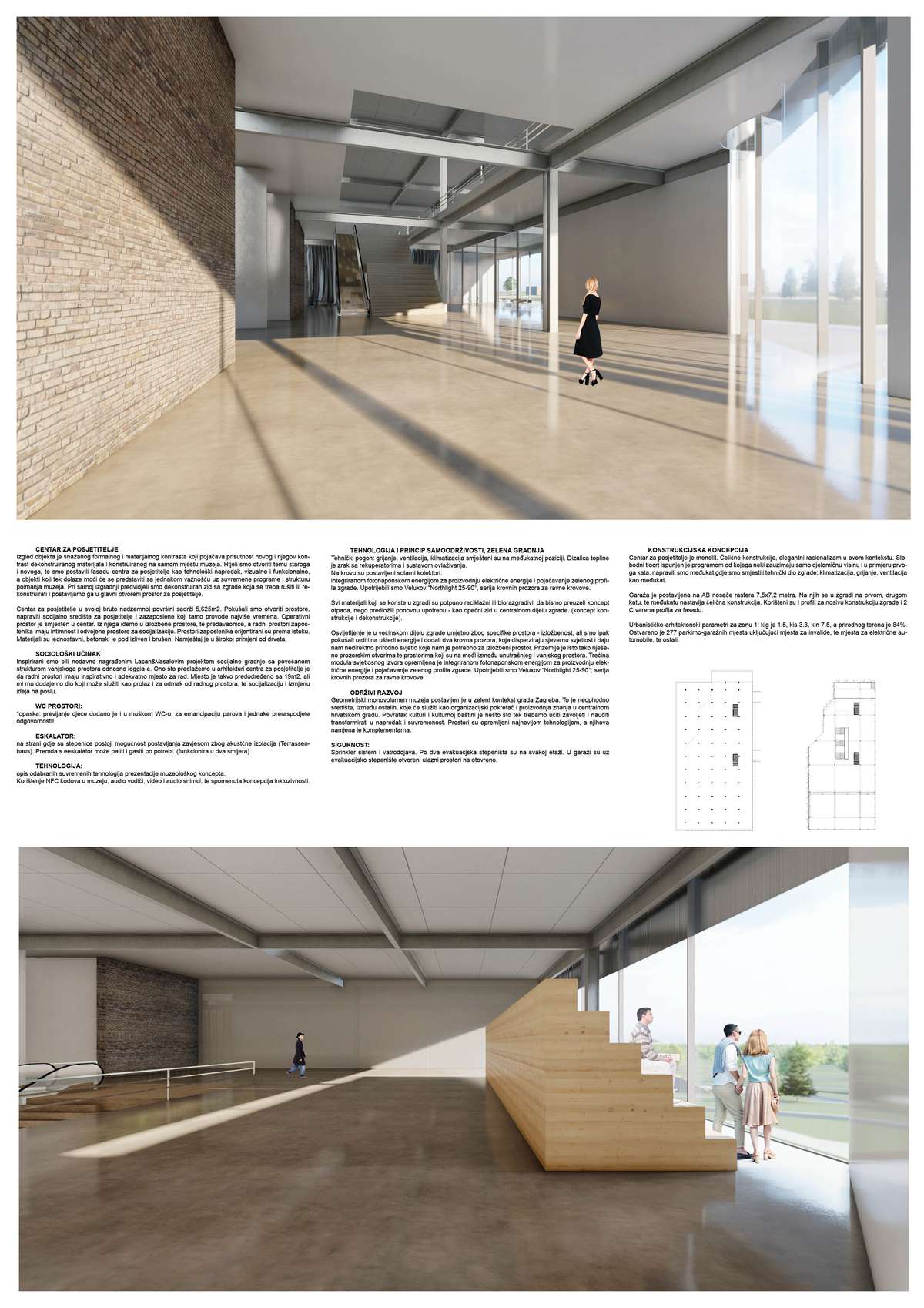
Interior, observing are of the outside lead by audio recordings. What we are proposing here is to re-establish knowledge of how it was built before, with what techniques and why. To be able to do this, we must practically participate. (Not all of us, but in a sense, all of us). We propose the concept of deconstruction - construction, that is, rebuilding. It is clear in the concept of competition that this is also the goal, but how it matters is also important.
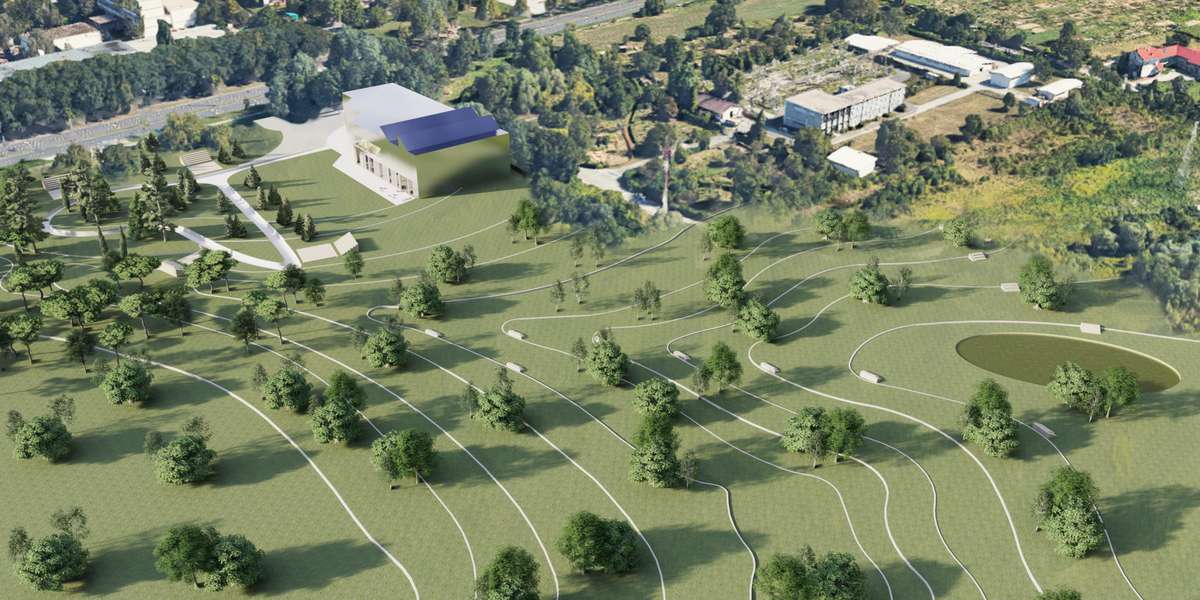
Exterior, arranged landscape arranged isohypse we use in graphics to mark the facts in nature. I have used them to logically distinguish different plant type that supposed to mark 5 different areas of Croatia (as given instruction in competition).
Already the park itself is such that it has widespread stands for socializing and enjoying the nature and free chairs that we must believe will not be stolen, which means giving the user responsibility and trust.
Museum for indigenous houses
Museum for indigenous houses

- Site-specific cases
The project is made for the competition: Museum for indigenous houses in Zagreb, end of 2019. As a program in urbanism, we propose a laboratory, production of knowledge so we could approach the time of creation, learn ways and reuse them in other contexts such as contemporary architecture, design, philosophy, urbanism, poetry, etc.
We have transformed the whole museum and its landscape into an observational and laboratory concept. Each step of involvement in this project should be planned, the work on inclusion.
In the concept of the Museum, we are going to deconstruct and then construct indigenous houses, support local economy, and as well involve students, professionals and make the whole process visible. We can return to materials that include professions and technologies that no longer exist, and that we consider important enough to pay homage, as a type of memory recognition and technology.
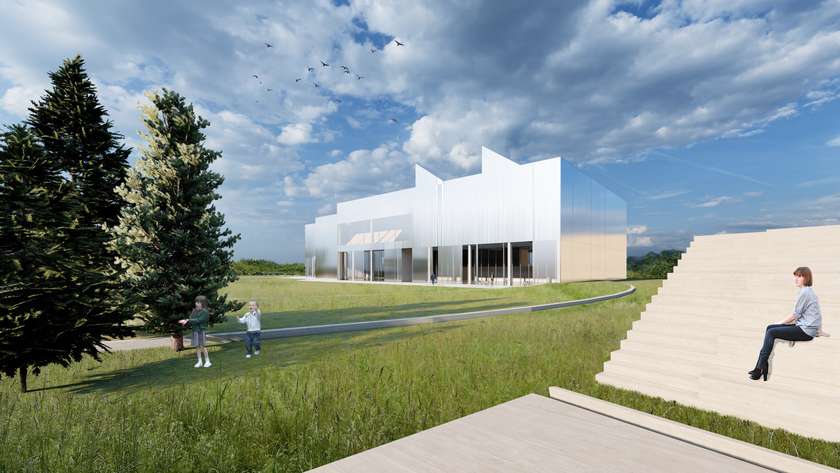
Exterior arrangements with tribune prototype. The Center for visitors consists of programs: central building with galleries, offices, educational spaces, and catering programs. The outdoor program is a prototype platform and stands for students and visitors.
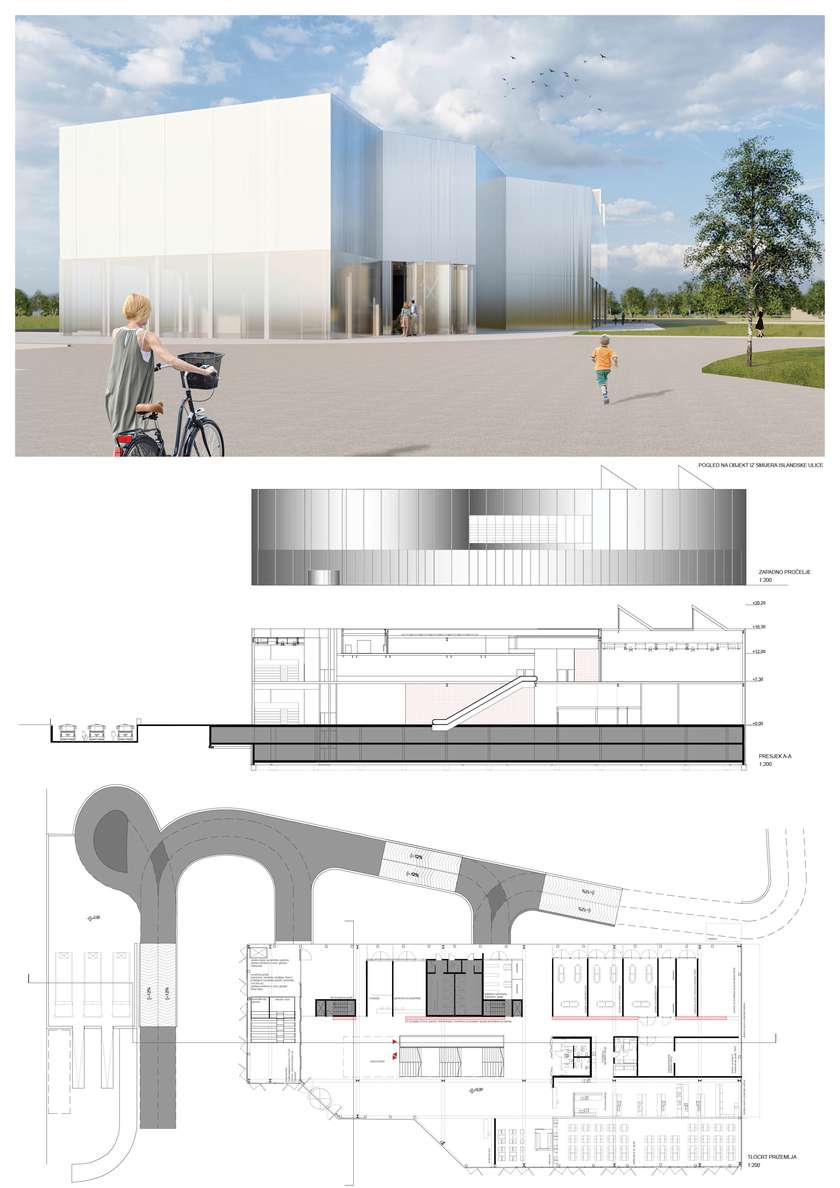
Page with the ground floor and render of the main central building. Practical involvement: the conservators will also be in the teaching process, teaching architecture students, engineers (the school next to the future complex), designers, etc. ,, how to dismantle, deconstruct the house, and while re-constructing it make a review, map, tutorial, review, go through the details; method of dismantling the object. We want to suggest involvement. Those who need to know this knowledge.

Page with the first floor and render of the central building.
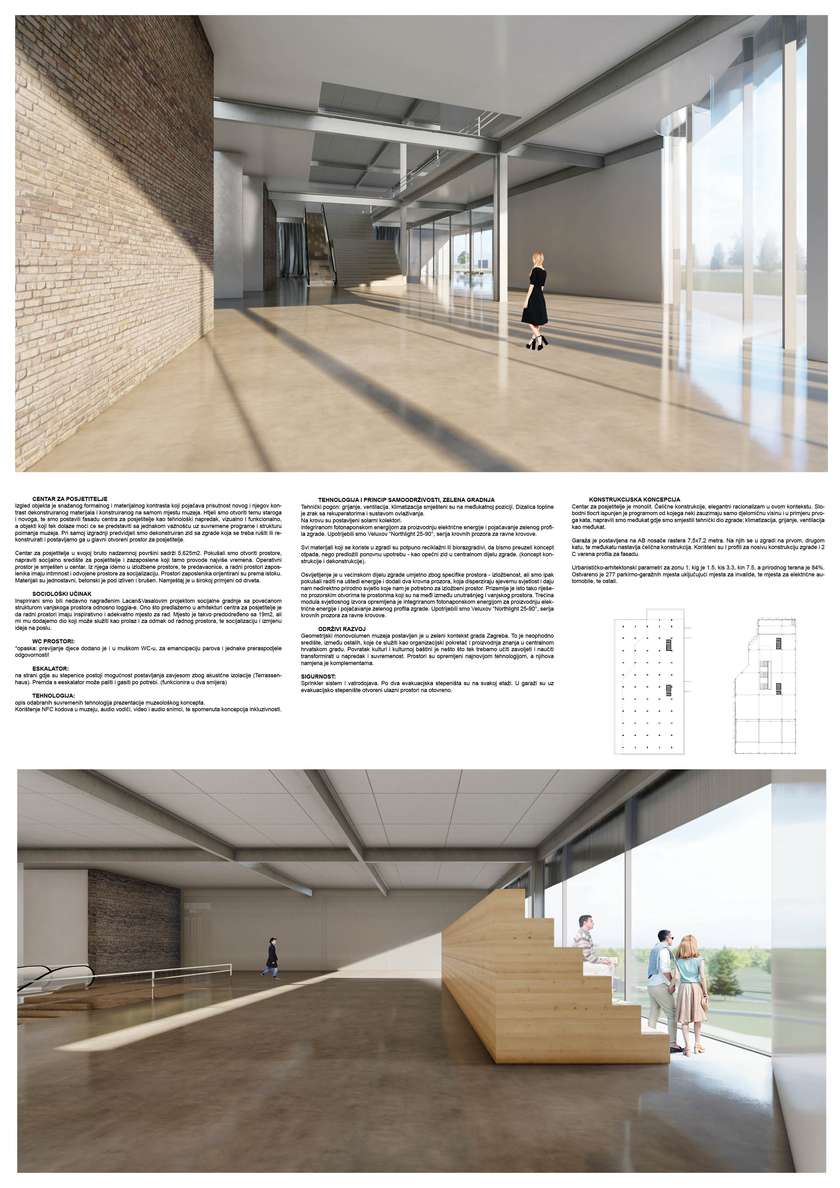
Interior, observing are of the outside lead by audio recordings. What we are proposing here is to re-establish knowledge of how it was built before, with what techniques and why. To be able to do this, we must practically participate. (Not all of us, but in a sense, all of us). We propose the concept of deconstruction - construction, that is, rebuilding. It is clear in the concept of competition that this is also the goal, but how it matters is also important.
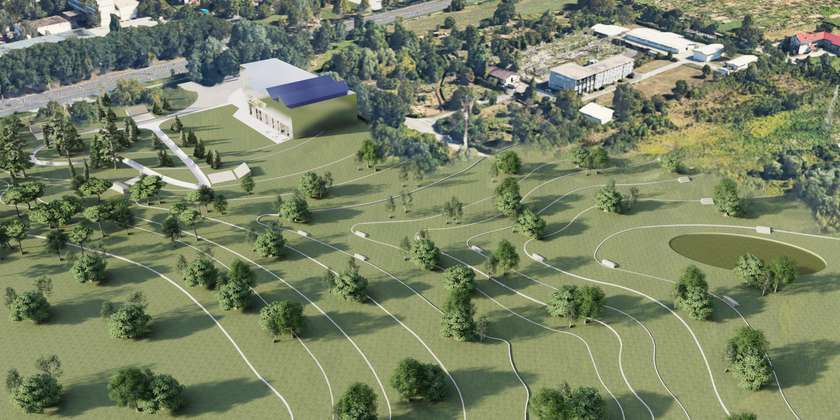
Exterior, arranged landscape arranged isohypse we use in graphics to mark the facts in nature. I have used them to logically distinguish different plant type that supposed to mark 5 different areas of Croatia (as given instruction in competition).
Already the park itself is such that it has widespread stands for socializing and enjoying the nature and free chairs that we must believe will not be stolen, which means giving the user responsibility and trust.